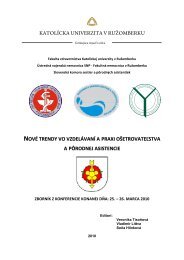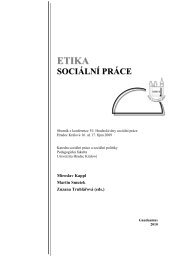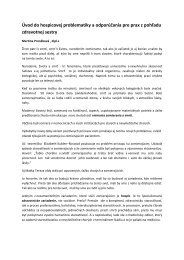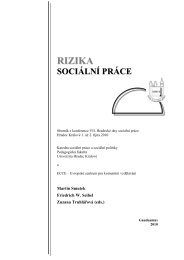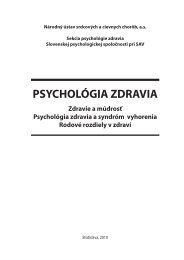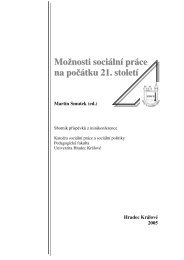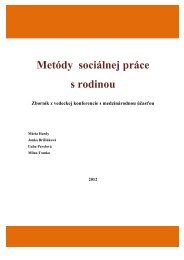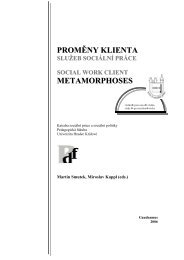Zmena klÃmy â možný dopad (nielen) na obyvateľstvo - Prohuman
Zmena klÃmy â možný dopad (nielen) na obyvateľstvo - Prohuman
Zmena klÃmy â možný dopad (nielen) na obyvateľstvo - Prohuman
You also want an ePaper? Increase the reach of your titles
YUMPU automatically turns print PDFs into web optimized ePapers that Google loves.
of HIV. The chapter concerning human health in the 4th recent report of the IPCC<br />
describes how drought (and by implication) other forms of CC-associated food<br />
insecurity increase the risk of acquiring and of dying from infectious diseases,<br />
including, again by implication, HIV. The chapter also observes the synergism<br />
between HIV and drought on nutrition. Its authors also allude to the HIV and<br />
CC complex (HACC) when they note, that in Africa and Asia the future course<br />
of the AIDS epidemic will significantly influence how well populations can cope<br />
with challenges from CC, such as the spread of climate-related infections (vectoror<br />
water-borne), food shortages, and increased frequency of storms, floods and<br />
droughts. Lastly, they observe that CC, especially if rapid and intense, is likely to<br />
delay progress in some regions towards achieving the Millennium Development<br />
Goals (MDGs) targets, one of which is to reduce the incidence and prevalence<br />
of HIV. There are many other papers which discuss emerging infectious diseases,<br />
including AIDS.<br />
In recent years the role of CC has frequently been mentioned in this lecture but<br />
the HACC is discussed rarely, if at all. Ebi et al. assess human health vulnerability<br />
under different CC sce<strong>na</strong>rios. They do not discuss HIV in their paper, but there is<br />
little discussion of specific diseases, and the principles they discuss could readily<br />
be adapted to examine the HACC. Campbell-Lendrum and Woodruff consider the<br />
BOD from CC. They cite the report by Gommes et al. (which specifically examined<br />
an aspect of the HACC) but they do not specifically discuss the HACC. Instead, they<br />
cite this report as supporting the observation that climate can influence a wide<br />
range of diseases through multiple pathways. Similarly, consideration of the AIDS<br />
literature also suggests that HACC has received little attention. A rare exception to<br />
the general rule of non-discussion of the HACC is provided by Tanser et al. These<br />
workers estimated an increase of 16–28% in person-months of exposure to malaria<br />
in Africa by 2100, on the assumption that future climates fall within simulated<br />
ranges, and they specifically commented on the link between HIV and malaria.<br />
The most recent World Disasters Report, which focuses on AIDS, does discuss<br />
some aspects of the HACC. It speculates that the shape of the global AIDS epidemic<br />
could be affected if CC causes significant population movement between areas<br />
with significantly different HIV prevalence levels.<br />
AIDS and climate change<br />
The distinctiveness of HIV is highlighted by several factors. One is its protean<br />
clinical manifestation. Because the virus compromises the immune system, its<br />
52





